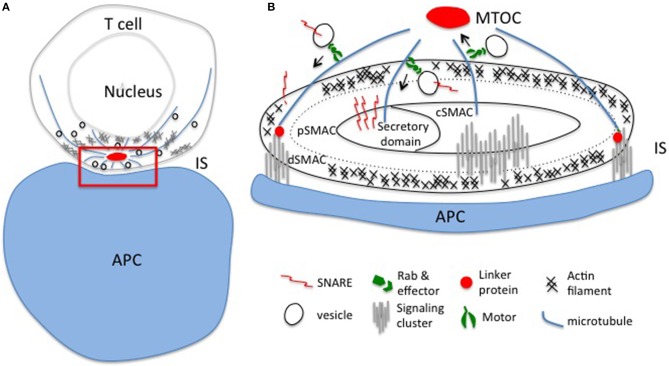Figure 1.
Polarized exocytosis initiated by cytoskeleton reorganization upon TCR activation. (A) T cell receptors encounter their cognate antigen on the APC leading to the formation of an immunological synapse and polarized intracellular trafficking established by the reorganization of actin and microtubule networks. Polarized intracellular trafficking is essential for directed release of effectors and local accumulation of signaling molecules at the immunological synapse. (B) Enlargement of the red region in panel (A). Vesicles travel along actin and mainly microtubule networks beneath the synapse. Rabs and SNAREs, and linker proteins connect the cytoskeletal network with the plasma membrane to ensure precise spatio-temporal control of the delivery of effectors and signaling molecules to the different domains of the synapse: the secretory domain, the central (cSMAC), peripheral (pSMAC), and distal (dSMAC) central supramolecular activation clusters. IS, immunological synapse; APC, antigen presenting cell; MTOC, microtubule organizing center.

